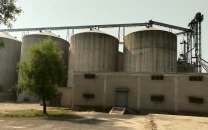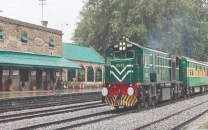ADB report on increasing food prices
A 10% price hike in key commodities will push 3.5m more Pakistanis into poverty.

ADB report on increasing food prices
A spike in the cost of food staples like rice and wheat could push tens of millions more people into extreme poverty in South Asia, says a new report by the Asian Development Bank (ADB) released from Manila. South Asia is one of the most vulnerable regions in the world to food price shocks. Spending on food already accounts for half the total budget of low-income households.
The study says that a 10% rise in prices could push almost 30 million more Indians and nearly 4 million more Bangladeshis into extreme poverty. Pakistan is also at risk, with the same price leap causing an additional 3.5 million more people to drop to or below the $1.25-a-day income mark.
A further surge in wheat prices would be especially painful for Sri Lanka, which is completely dependent on imports of the staple and has already seen prices hit historical highs in recent years.
The report - Food Price Escalation in South Asia - A Serious and Growing Concern - notes that after peaks in 2008 and 2011, prices of key food commodities have eased somewhat, although the rate of decline has been slower in South Asia than the international average.
In addition, the region suffers from higher overall food inflation rates than the rest of developing Asia, with food making up a bigger share of items measured by the consumer price index.
Long term, governments must step up support for agricultural research to spark another “green revolution” to lift output and help develop crops more resistant to weather extremes.
More investment in infrastructure, such as irrigation systems and farm-to-market roads to improve distribution and reduce post-harvest losses is also essential.
Published in The Express Tribune, March 20th, 2012.



















COMMENTS
Comments are moderated and generally will be posted if they are on-topic and not abusive.
For more information, please see our Comments FAQ